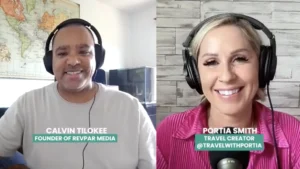Want to Support and Encourage More Women in Tech? Focus on Company Culture and Equity in Hiring
Late last year, a problematic statistic came to light: Over 50% of women in tech reported experiencing sexual harassment, inequality or discrimination at some point during their work life. And with startup culture often being compared to college frat life, some believe that women may find it even harder to fit in. It seems no surprise, then, that the percentage of women in tech is still low. Recent reports out of Statista show that, between some of Big Tech’s biggest, women in tech roles amount to an average of around 24% of the workforce.
Women in leadership positions agree that tailoring the workplace for ensuring workplaces are safe for women, offering flexible working hours for working mothers, and providing opportunities for growth, can go a long way in making women feel valued in the workplace. At the same time though, just hiring more women for tech roles isn’t going to make the tech industry more attractive or inclusive for women on its own.
Behavioral scientist Dr. Liz Wilson, who founded Include Inc. with the aim to promote and encourage positive company culture, unpacks some of the misguided strategies companies are taking to tackle their company’s gender gap. Dr. Wilson explains why it’s so important to address the cultural foundations of the company before relying on better hiring practices to encourage more women in tech.
Liz’s Thoughts
“The stats on gender representation and gender pay equity in STEM and tech aren’t great, and I know even with your best intentions, organizations are struggling to make headway while facing the challenges of retaining their gender diverse talent, as well as even just finding gender diverse talent to apply to their job vacancies in the first place.
But before I give you some tips on creating an inclusive tech organization where gender diversity can thrive, I’d really like to cover off two common mistakes that I find can often get in the way of achieving your inclusion objectives. So firstly, as soon as you mentioned women as the focus of your effort — If you’re not a woman, it’s just simple science that you’ll switch off because you think whatever’s being talked about isn’t relevant to you. But really, it’s men that are the ones that need to pay the most attention and with the most power influence to make a difference in this case of gender diversity and inclusion. So my advice is, even if one of your inclusion objectives is to specifically increase gender representation in your organization, leave the label out of it. You want and need everyone to be part of the solution for creating an inclusive workplace environment, so that when inclusive hiring decisions are made, diverse talent can thrive, and they actually end up staying.
Oh, and another important point: Women are very likely more than just a woman. So their inclusion needs are about meeting all their needs — not just their gender needs. Think race, ethnicity, LGBTQI plus, indigenous, disability, neurodiversity, physical and mental health, veteran status, and so on. Inclusion is about including the whole person. [Secondly], gender quotas should be approached with caution. I agree that what gets measured gets done, mostly, but you have to be careful how those measures are used because diversity quotas have been found to create a stigma that hiring decisions have not been made based on merit, and that the only reason that the person was hired was because of their identity, which further ostracizes the person from being valued and included. Diversity quotas also fail to address the true cause of underrepresentation — exclusion and discrimination, because they’re a lag indicator. Now achieving a quota for an identity group does not automatically mean these people are being included in your organization. Diversity does not equal inclusion. Instead, efforts must be made to ensure the organization provides an environment that values and empowers people from underrepresented groups to thrive in their roles and careers.
Now, I know I might ruffle some feathers by saying that I actually don’t think that focusing on hiring more women right now is the solution. I get that it seems the most obvious thing to do when you have to set a target to increase gender representation. But if your workplace culture is not inclusive, then you’re just giving your new hires another opportunity to have a terrible experience. So while I do want you to work on attracting more gender diverse applicants to your job openings, and then of course shortlisting them and interviewing them and hiring them hopefully, my recommendation is use strategically and as a matter of priority, address your organization’s ways of working, your processes, the decisions you make, and how you make them, the actions you take and the behaviors you demonstrate and accept. That’s the key to creating an inclusive organization where diversity thrives. And finally, look, if all of that seems too much, too soon for you, my advice: Simply start by making every meeting an inclusive meeting. Meetings are where culture in your organization forms, grows and matures.”
Article written by Aarushi Maheshwari.







